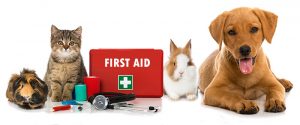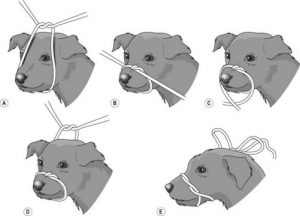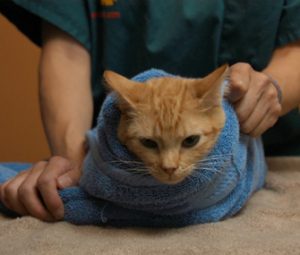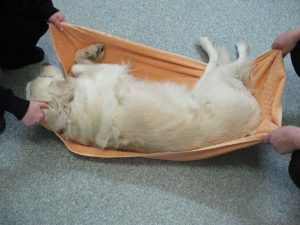April is Pet First Aid Awareness Month. Avoid the feelings of helplessness and panic associated with common pet medical emergencies by reading our Blog series on Pet First Aid all month long.

If your pet is injured, it could be in pain and is also most likely scared and confused. You need to be careful to avoid getting hurt, bitten or scratched. Knowing how to comfort an injured pet can help minimize your pet’s anxiety and also protect you and your family from injury.
Just like human beings, pets can be hurt in ways that are obvious and in ways that are harder to detect. However, pets do not have the ability or cannot tell you when they`re hurt. Therefore it`s always important to know some of the common signs of a pet that is injured. In most cases, if your pet has been injured, it will exhibits signs of pain and is most likely be confused and scared. In case you notice any of these signs on your pet, you should take certain precautions to avoid further injury to the pet, and also protect yourself from the pet-injured pets tends to have a paranoid attitude and can bite, scratch, or hurt their owners.
Below are some tips to follow if your pet is injured.
Protect Yourself
The first precaution to take when handling an injured pet is protecting you. An injury can cause even the most docile and kind pets to behave in an aggressive and hostile way. Therefore, it`s always important to take an extra precaution to avoid biting, scratching, etc. 
- Keep your face away from the pet’s mouth. Never assume that even the gentlest pet will not bite or scratch if injured. Pain and fear can make animals unpredictable or even dangerous.
- If necessary and if your pet is not vomiting, place a muzzle on the pet to reduce the chances you’ll be bitten.
- Dogs may be muzzled with towels, stockings or gauze rolls.
- Ensure that the fabric does not cover the nose, or obstruct breathing.
- NEVER muzzle your pet if it is vomiting, it can result in choking.
- NEVER muzzle a pet that has chest injuries, it may exacerbate the injury.
- Cats and other small animals may be wrapped in a towel to restrain them, but make sure your pet is not wrapped in the towel too tightly
- Dogs may be muzzled with towels, stockings or gauze rolls.

Avoid Frightening the Pet
When approaching your injured pet, do it slowly and calmly, without having to frighten it more than already it is.
- Don’t attempt to hug an injured pet. Although this may be your first impulse to comfort your pet, it might only scare the animal more or cause them pain. Not only can it cause the pet to react aggressively to your advances, but it can also transmit some airborne infections.
Examine the Pet
If the pet allows, you can conduct a medical examination to determine the extent of the injuries.
- During the examination, ensure that you’re gentle and careful as much as possible to avoid startling the pet. You can do this by speaking gently and caressing the pet to keep it calm. If it’s a bleeding wound, you can try to stabilize the bleeding by gently cleaning the area, removing the hair clipping around and then applying a temporary bandage on the wound. However, if the pet becomes agitated, you should stop the examination.
Call a Veterinarian
- Call your veterinarian or an emergency veterinary clinic before you move your pet so they can be ready for you when you arrive.
Transporting the Pet to the Vet
 If you`re going to transport your pet to the health center, it`s advisable to keep the pet confined in a small area to avoid further injuries.
If you`re going to transport your pet to the health center, it`s advisable to keep the pet confined in a small area to avoid further injuries.
- If possible, try to stabilize injuries before moving an injured animal by splinting or bandaging them.
- While transporting your injured pet, keep it confined in a small area to reduce the risk of additional injury. Pet carriers work well, or you can use a box or other container (but make sure your pet has enough air). For larger dogs, you can use a board, toboggan/sled, door, throw rug, blanket or something similar to act as a stretcher.
- You should always keep your pet’s medical records in a safe, easily accessible place. Bring these with you when you take your pet for emergency treatment.
Always remember that any first aid administered to your pet should be followed by immediate veterinary care. First aid care is not a substitute for veterinary care, but it may save your pet’s life until it receives veterinary treatment.




Leave a Reply